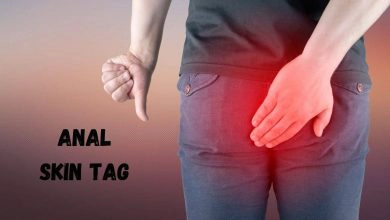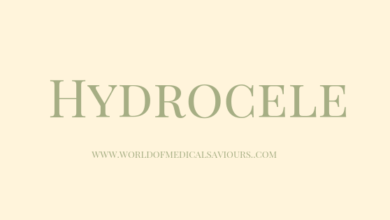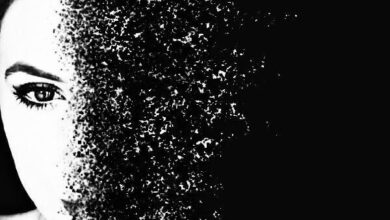Acute kidney injury (AKI)

Acute kidney injury (AKI) refers to a sudden and often reversible loss of renal function, which develops over a period of days or weeks. There are many possible causes and AKI is frequently multifactorial.
Clinical features
Patients are usually oliguric (urine volume <500 mL daily). Anuria (no urine) is rare and usually indicates acute urinary tract obstruction or vascular occlusion. In ~20% of cases, the urine volume is normal or increased, but with a low GFR and a reduction of tubular reabsorption (non-oliguric AKI). Excretion is inadequate despite good urine output, and the plasma urea and creatinine increase.
Clinical features of advancing uremia include anorexia, nausea, and vomiting followed by drowsiness, apathy, confusion, muscle-twitching, hiccoughs, fits, and coma. The respiratory rate may be increased due to acidosis, pulmonary edema, or respiratory infection.
Anemia is common and is caused by blood loss, hemolysis or decreased erythropoiesis. Bleeding occurs because of disordered platelet function and disturbances of the coagulation cascade. Severe infections may complicate AKI because immune mechanisms are depressed.
Pre-renal AKI: Patients with pre-renal AKI are typically hypotensive and tachycardic, with signs of hypovolaemia including postural hypotension (> 20/10 mmHg fall from lying to standing). Patients with sepsis may have peripheral vasodilatation and yet have relative under-filling of the arterial tree and renal vasoconstriction leading to AKI with acute tubular necrosis (ATN).
Although the cause of renal hypoperfusion may be obvious, concealed blood loss may occur following trauma (e.g. pelvic fractures) or into a pregnant uterus. Also, large volumes of intravascular fluid may be lost after injuries and burns, and in severe inflammatory skin diseases or sepsis. Finally, pre-renal AKI may occur without hypotension in those taking NSAIDs or ACE inhibitors. Hyperkalaemia is common.
Dilutional hyponatremia occurs if the patient has continued to drink freely despite oliguria or has received inappropriate iv dextrose. Metabolic acidosis develops unless prevented by loss of hydrogen ions through vomiting or aspiration of gastric contents. Hypocalcemia, due to the reduced renal formulation of 1,25 dihydroxycholecalcif¬erol, is common.
Renal and post-renal AKI: Factors that can differentiate the causes of renal. Patients should be examined clinically and by USS for bladder enlargement and hydronephrosis.
Investigations for AKI
The investigations of acute kidney injury are enlisted below:
Urea and creatinine Electrolytes Calcium and phosphate
Compare to previous results If potassium >6.5 mmol/L, treat urgently Low Ca, high PO4, suggest CKD. Ca low in rhabdomyolysis; check CK. Hypercalcemia in myeloma
Albumin FBC
Low in nephritic syndrome and sepsis Anaemia in CKD. Fragmented RBC with raised LDH in thrombotic microangiopathy. Low platelets and abnormal clotting in DIC
CRP
High in sepsis and inflammatory disease. ESR misleading in acute kidney injury (AKI)
Urinalysis
Marked haematuria suggests glomerulonephritis, tumor, or bleeding disorder. Heavy proteinuria suggests the glomerular disease
Urine microscopy
Casts or dysmorphic RBCs suggest glomerulonephritis
Renal USS
Leucocytes suggest infection or interstitial nephritis Crystals in drug-induced or uric acid nephropathy Reveals hydronephrosis/¬obstruction.
Small kidneys suggest CKD. Asymmetric kidneys in congenital or vascular disease
Cultures
Blood, urine, sputum, wound as appropriate
CXR
May reveal pulmonary edema, pericardial effusion, fibrotic change in systemic inflammatory diseases pulmonary hemorrhage
Serology
HIV and hepatitis status in case dialysis needed
ECG
If patient >40, electrolyte abnormalities or cardiac risk factors
Management
Establish and correct the underlying cause: If hypovolaemia is present, restore blood volume as rapidly as possible (with blood or balanced salt solutions such as Hartmann’s). CVP monitoring may help to guide the rate of administration of fluid, as over-filling can cause pulmonary edema and worsen outcomes. Critically ill patients may require inotropic drugs to restore an effective BP (p. 25), but recent trials do not support the use of low-dose dopamine in severely ill patients at risk of AKI. Nephrotoxic drugs should be withdrawn. Obstruction to urine flow should be relieved either with a catheter or nephrostomy for ureteric obstruction.
Correct metabolic disarrangement: hyperkalemia >6.5 mmol/L should be treated immediately to prevent arrhythmias. Correct metabolic acidosis. Healing of blood volume will correct acidosis by restoring kidney function. Severe acidosis may be treated with sodium bicarbonate (e.g. 50 mL of 8.4%) if volume status allows.
Acute kidney injury in a hemodynamically stable, non-septic patient
Urinary tract obstruction
- Suggested by a history of loin pain, haematuria, renal colic, or difficulty in micturition but often clinically silent
- Can usually be excluded by renal USS – essential in any patient with unexplained AKI
- Prompt relief of obstruction restores renal function
Drugs
- Poisoning, e.g. paraquat, paracetamol, snake bite, herbal medicines
- Therapeutic agents – direct toxicity (aminoglycosides, amphotericin) or hemodynamic effects (NSAIDs, ACE inhibitors); phosphate crystallization from IV or bowel administration
Rapidly progressive glomerulonephritis (RPGN)
- Typically, significant haematuria and/or proteinuria
- Causes include systemic vasculitis, systemic lupus erythematosus (SLE), and Goodpasture’s (anti-GBM) disease)
- Useful blood tests include: ANCA, ANA, anti-GBM antibodies, complement, immunoglobulins
- Renal biopsy shows aggressive glomerular inflammation, usually with crescent formation
Acute interstitial nephritis
- Usually caused by an adverse drug reaction
- Characterized by small amounts of blood and protein in the urine, often with leucocyturia
- Kidneys are normal size
- Requires cessation of drug and often prednisolone treatment
Nutrition
Parenteral or enteral tube feeding may be needed in hypercatabolic patients. The feed should include sufficient energy and adequate protein, although high protein intake should be avoided.
Infection control
Patients with AKI are at risk of intercurrent infection, and prompt diagnosis and treatment are essential.
Immunosuppression
Patients with glomerulonephritis may require immunosuppressive drugs, plasma infusion, and plasma exchange.
Renal replacement therapy
If uremia and hyperkalemia fail to respond to the above measures, a period of renal replacement therapy may be required. The two main options for AKI are hemodialysis or high-volume haemofiltration. Both carry risks, including hemodynamic instability and infected catheters, so careful assessment of individual cases is required. Peritoneal dialysis can be used if hemodialysis is unavailable
Recovery from Acute kidney injury (AKI)
A gradual return of urine output and a steady improvement in biochemistry accompany recovery. Some patients, primarily those with ATN or those in whom chronic urinary obstruction has been relieved, develop a ‘diuretic phase’. Sufficient fluid to replace the urine output should be given. After a few days, urine volume falls to normal as the concentrating mechanisms recover. During the diuretic phase, supplements of sodium, chloride, potassium, and phosphate may be necessary to compensate for increased urinary losses.
Frequently asked questions
what does AKI stand for?
AKI stands for Acute kidney injury which refers to sudden and reversible loss of renal function.
What’s the AKI warning stage test?
Assessment of the serum creatinine level is known as the AKI warning stage test in which there are significant changes in it.




